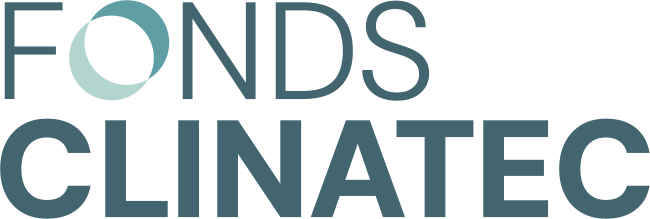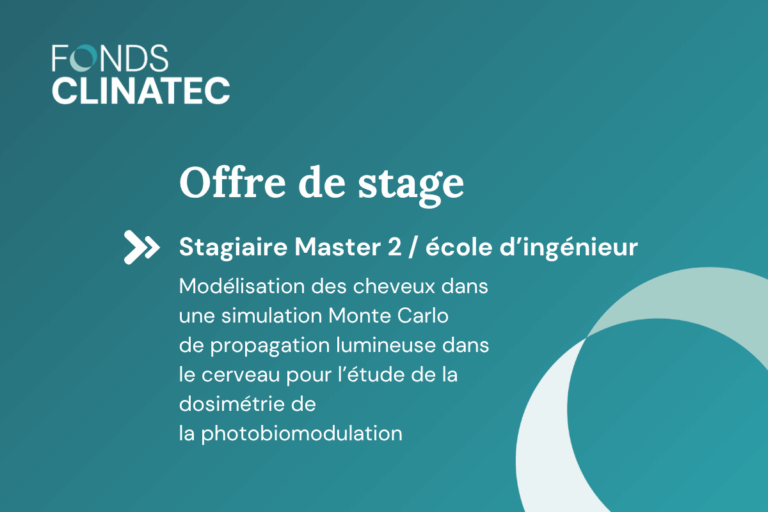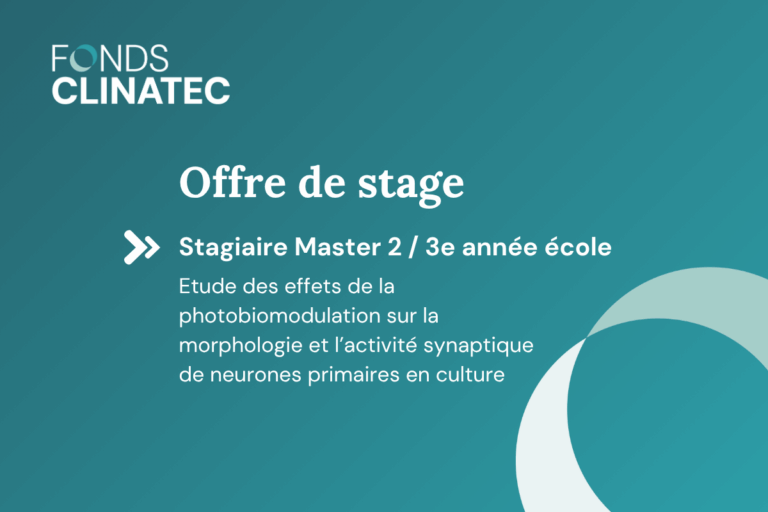Exploring the effectiveness of photobiomodulation as a neuroprotective agent in Alzheimer’s disease
Supervision : Pr John Mitrofanis
Localization : Clinatec-FDD Clinatec, Grenoble, France
We are looking for one post-doctoral candidate to join our team at Clinatec, Grenoble, France. This department tests medical devices for biocompatibility and is involved in the design, development and validation of innovative diagnostic and treatment approaches.
Topic of the study
This experimental programme will focus on the development of photobiomodulation – the use of red and near infrared light on body tissues – as a viable therapeutic option for Alzheimer’s disease, the most prevalent of the neurodegenerative diseases. Currently, there is no effective therapy for this devastating condition, neither neuroprotective, that stops the relentless progression of the pathology, nor symptomatic, that treats the signs and symptoms (Nelson and Tabet 2015). Hence, there is a real need for the development of an effective treatment, particularly a neuroprotective one.
To this end, the experiments outlined in this proposal aim to determine photobiomodulation first, as a reliable neuroprotective agent when applied to all zones of pathology in Alzheimer’s disease and second, as a method that induces an improvement in functional activity across the brain in both health and disease (Mitrofanis 2019). A better understanding of both these two issues are key to the further development of an effective therapeutic treatment for Alzheimer’s disease.
The post doctoral candidate will be in charge more specifically to develop in vivo model based on drug induced effects. Streptozotocin is a glucosamine-nitrosourea compound that is toxic to pancreatic beta cells and hence used commonly as an animal model of diabetes. More recently, it has been developed to induce Alzheimer-like cognitive deficits and pathology in mice (Kamat 2015; Fronza et al 2019). We plan to make intracerebral injections of streptozotocin and then apply photobiomodulation with a bespoke device. These experiments will explore, for the first time, any photobiomodulation-induced changes in behaviour and histopathological markers in a non-human primate model. The translational implications of these findings for patients are considerable. Brains will be processed for routine immunohistochemistry with the common antibodies used in Alzheimer’s disease studies. The distribution and pattern of these markers will be quantified (with the use of stereology) and compared to controls (shams and wild-type). We also plan to explore any changes in the behavior of the animals with a series of standard cognitive tests during this period. Finally, we will examine whether photobiomodulation can change neurotransmitter levels in the brain (eg acetylcholine, dopamine), by using the high-performance liquid chromatography (HLPC) method. Once this series of experiments is completed work will commence with normal human subjects followed by Alzheimer’s patients.
Technical description
The techniques to be used are many and the applicant should have experience in at least animal behaviour, histology, and immunhistochemistry. We need an experienced post doc.
Applicant
Applicants must have a Ph.D. in a relevant discipline (biology or neurosciences) and experience of several years with non-human primates. Good written and verbal English communication skills are required and French practice would be appreciated. Preference will be given to candidates with an excellent track record of peer-reviewed publications.
Conditions
The candidate will have the opportunity to have an attractive 3-year post-doc grant.
Contact
Malvina Billères
+33681265418
malvina.billeres@cea.fr



